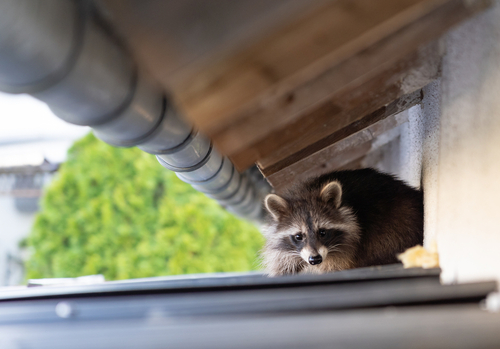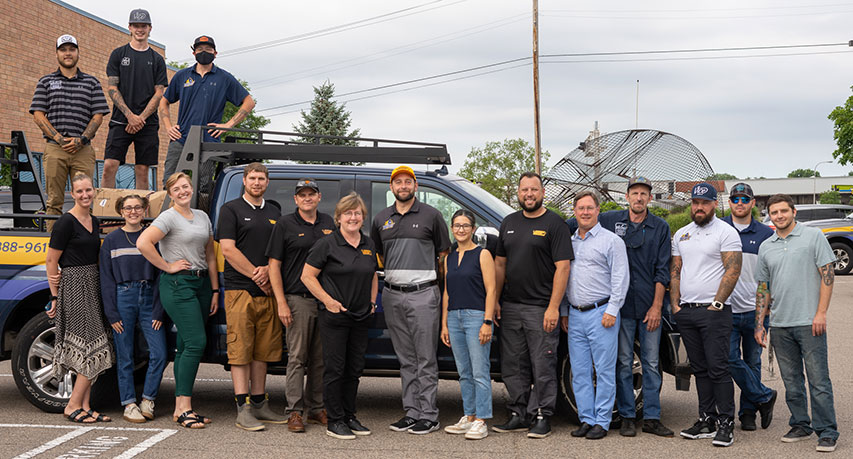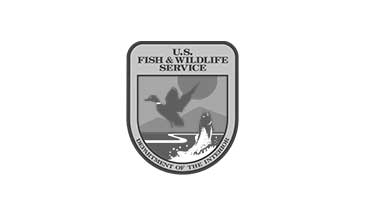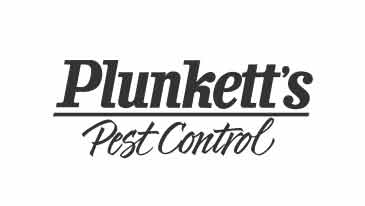Do you hear strange rustling noises at night? Is there an unpleasant odor coming from your shed? These might be signs of a wildlife infestation.
An animal infestation can happen to even the most careful homeowner or property manager. We’ve put together this article to teach you about common wildlife pests, why wildlife may be attracted to your property, signs of a wildlife infestation to watch out for, and what to do if an unwanted guest decides to call your property home.
Common Wildlife Pests
The exact species of wildlife pests you’re dealing with will depend on where you’re located. In the Midwest and Mideast, common wildlife pests include:
-
Bats
-
Beaver
-
Birds
-
Coyotes
-
Deer
-
Fox
-
Groundhogs
-
Muskrats
-
Oposums
-
Rabbits and other rodents
-
Raccoons
-
Skunks
-
Snakes
-
Squirrels
-
Tunneling animals (gophers, voles, and shrews)
Why Wildlife May be Attracted to Your House
Nuisance wildlife are looking for similar things in a home that we are: food, shelter, and warmth. Most of the time, they can find everything they need in their natural habitats. If they find their way into your home or yard, it’s because something about that space is attracting wildlife.
Here are some ways you might be unintentionally making your home appealing to wildlife:
-
Providing a food source — Wildlife is attracted to easy sources of food. Storing pet food outside, having an unsecured garbage can lid, or a food compost pile can all attract pests to your yard. But even things like bird feeders, vegetable gardens, and certain plants in your landscaping can draw nuisance wildlife to your property.
-
Delicious smells — It’s possible for pests to follow their noses right into your home. Food smells, including garbage and pet food, can lead nuisance wildlife to your space. Animal carrion can also attract pests. If you hunt or fish, make sure to thoroughly sanitize your space after cleaning and dressing fish or wild game.
-
Added security — Your yard or home might give nuisance wildlife a safe place to hide out. A landscape thick with shrubs, trees, and overgrowth can shield animals from predators. If they’re able to find a way into your attic or garage, even better.
-
Warmth — As the seasons change, wildlife pests will be seeking out warm places to hide out from the cold weather. Leaving piles of leaves and other yard waste can attract animals who want to make a warm nest. Gaps or holes in your house or garage can also seem like a welcome mat to invading wildlife.
Signs of a Wildlife Infestation
The easiest way to know if you have an animal infestation is by actually seeing the wildlife. Of course, pests can be sneaky. You’re not always able to spot them. There are other signs of wildlife that you can watch for, including:
Animal Droppings
Animal droppings aren’t pleasant. They’re dirty, they’re a pain to clean up, and they are a telltale sign that nuisance wildlife has moved in. The appearance and location of animal feces can also tell you what type of wildlife pest you’re dealing with.
If you notice a large amount of animal feces in your home or yard, call a wildlife pest control professional. It’s a health hazard to interact with wildlife scat and urine. Find trusted wildlife pest control near you to make sure it’s cleaned up the right way so you can keep you and your family safe.
Property Damage
Damaged property can be a sign of unwelcome visitors. It might be as small as tipped over trash cans or a garden that’s been picked clean. But nuisance wildlife may cause more serious damage to your home.
For example, a bat infested house can develop structural damage from corrosive bat guano and urine. Squirrels, raccoons, and rodents might chew through wires, make holes in your house, and contaminate insulation.
Animal Tracks
Unfamiliar footprints can mean that you have an animal infestation. Some tracks, like the ones deer hooves make, can be easy to identify. But other animal prints can be harder to recognize because they can look like dog, cat, or human footprints. If you notice strange tracks in your yard or house, contact a wildlife pest control professional for help. We have special training in identifying nuisance wildlife.
Strange Noises, Especially at Night
Scratching, scurrying, chewing, chirping or even growling can all be signs that animals have taken up residence in your home. If you’re hearing noises from inside your walls, up in the ceiling, or under your deck, it’s time to call in the professionals.
What to Do if You See Signs of a Wildlife Infestation
If you notice signs of an animal infestation on your property, it can be tempting to take matters into your own hands. Afterall, how difficult can it be to get rid of a bat problem or a few pesky raccoons?
Don’t try to handle an animal infestation on your own. Interacting with wild animals and animal waste can be a danger to you and your family. Instead of taking a risk, reach out to a wildlife pest control professional near you.
The best thing to do if you see signs of a wildlife infestation is to contact wildlife pest control. Professionals can help with wildlife removal and trapping, wildlife cleanup services, and wildlife repellent. Plus, they can help with wildlife infestation prevention to keep unwanted guests away for good.
Where Can I Find Wildlife Pest Control Near Me?
Varment Guard Wildlife Services provides residential and commercial wildlife pest control in the Midwest and Mideast. We have over 130 years of combined experience in wildlife pest control and bird management. Our highly specialized team is certified in wildlife removal, and the vast majority have degrees in wildlife management.
No matter what type of wildlife you’re dealing with, Varment Guard is here to help. Are you ready to take care of your pest problem? Schedule an appointment online or give us a call at 800-793-8169.









